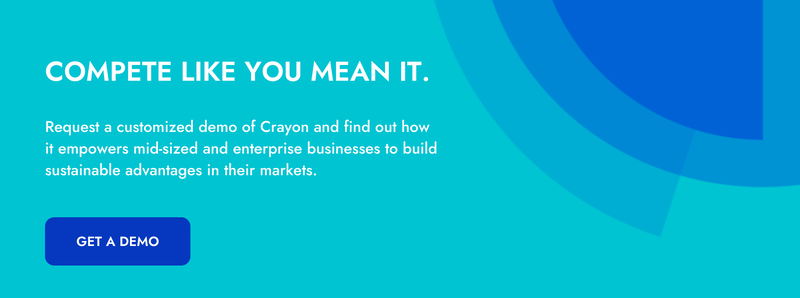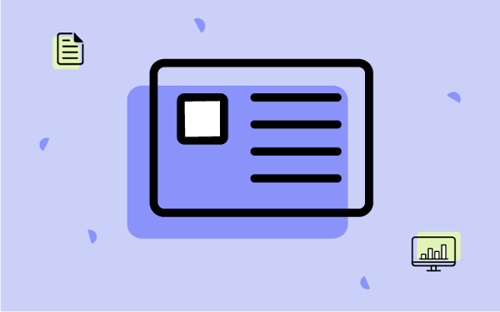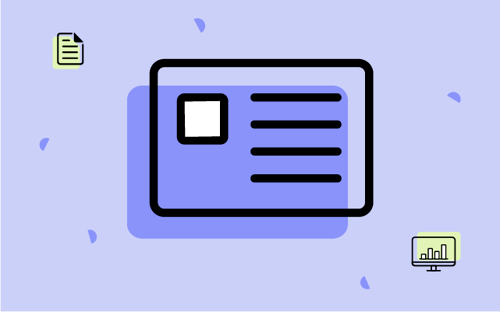Battlecards.
They can be your organization’s secret weapon or just another outdated file buried in the shared drive. But while every PMM worth their salt knows they should be creating, updating, and sharing battlecards, ensuring efficacy can feel daunting.
Let’s fix that.
Crayon’s very own VP of Product Marketing, Erik Mansur, spoke with three competitive intelligence experts—Elvis Lieban from Gong, Nathan Teplow from Salsify, and Hugh Ghods from Hootsuite—in an effort to answer a deceptively simple question …
What makes a truly great battlecard?
Is it the format? The tone? The sheer volume of information packed into a single document?
In an hour-ish of free-flowing conversation—which you can watch above—our experts identified five battlecard best practices to which every organization should adhere:
- Determine its purpose
- Play both offense and defense
- Don’t talk price—talk value
- Strike a balance between detail and digestibility
- Ensure accessibility
Let’s discuss.
1. Determine its purpose
Most of the time, when we think battlecard, we think “sales tool.”
But AEs aren’t the only members of your sales organization who can benefit from up-to-date, accessible competitive intelligence. “A BDR has different needs than a new business rep versus an upsell rep or someone in renewals,” says Elvis Lieban. Before you bring your fingers to the keyboard, you need to know the intended audience and desired outcome.
A BDR might not need depth, but quick hitters for the times when a prospect picks up the phone and says “I’m already using [Competitor X]” can be the difference between an immediate hang-up and a booked demo.
The same principle applies to battlecards used by other stakeholders in your organization, too. More from Elvis on the matter:
“For the product team, battlecards are a place to access repeatable feature and functionality research. They don’t need spin—they’re looking for information that helps them stay ahead of the competition.”
Of course, there will be data that make the cut across the board—perhaps the most important of which is social proof.
“Showing how you win is great. It’s about the product, about you,” says Nathan Telpow, “but if you want to take your battlecards to the next level, you need a customer story.”
You’re a product marketer—a born storyteller, right? So, skip the lazy feature comparison matrix in favor of a narrative that puts your prospect in the driver’s seat. On each of your battlecards, replace that homage to Minesweeper with a data-backed customer story addressing a customer win that doubles as a twist of the knife:
Sure, [competitor] can do [thing], but so can we. In fact, we worked with [Customer X] on [initiative]; with our help, they managed to [accomplishment, ideally involving a number].
Your reps will love you.
2. Play both offense & defense
A battlecard shouldn’t be created after a brainstorming session with a roomful of enraged or dejected sales reps pelting you with the gory details of their most stinging losses.
While they’re powerful sales enablement tools, battlecards should be built with your customer’s impending victory (with the assistance of whatever you’re selling, of course) in mind.
It’s okay to be black and white when you’re on offense, talking about your product and what makes it the right choice. “You can achieve [desired result] using [feature].” There’s no need to overcomplicate things with superfluous details.
When it comes to defense, however, it's okay to get gray.
“When you're on defense,” says Nathan, “you want to obscure the playing field.”
Let’s say a competitor’s product has a feature that yours doesn’t. Your battlecard needn’t tackle it head on. Instead, change the conversation. Devalue the feature’s importance by highlighting what it doesn’t do. If your reps tell you that prospects are pressing, develop a talk track that speaks to your product’s ability to skin the same cat a different way.
Remember: Nobody ever brings up a competitor just to bring up a competitor. Determining the depth of prospects’ knowledge of the competitive landscape is essential in determining whether your battlecards should help your AEs play offense or defense.
“How familiar the prospect is with the competition is a really big deal,” says Elvis. “Did they just Google one competitor before the call for the sake of quizzing the rep? Or is this a real evaluation?” Your battlecard(s) should be able to help reps address both.
3. Don’t talk price—talk value
All three of our experts were in agreement: A conversation about pricing is a race to the bottom.
So don’t make pricing the crux of your battlecards.
“I think everyone in the company needs to know how we compare against the competition from a pricing perspective, but also from a greater competitive intelligence perspective. Price is not about the number. It’s about the relative positioning,” says Elvis.
Are you a premium product? Are you a value product? Both can make for killer talk tracks; it’s all about how you support the positioning.
With a premium product, maybe your focus is on having more functionality, whereas if you’re positioned as a value product, perhaps you’re cutting out everything prospects don’t need to give them a simple, effective solution.
This doesn’t mean you need to bring straight-up pricing (or feature) comparisons to the table.
“To me,” says Nathan, “that's going too far. You're getting way in the weeds. You've stopped talking about value at that point. It’s totally fine, ideal even, to have those resources on deck: They're just not linked on the battlecard.”
“Your battlecard” says Hugh, “should be about the value points, not the dollar.”
4. Strike a balance between detail & digestibility
The filmmaker Martin Scorsese—you know, Goodfellas, Casino, Taxi Driver—has a famous habit: Whenever he wins an award, the person he thanks first is a woman named Thelma Schoonmaker, the editor that he's worked on every single one of his movies with.
Why?
Because Marty believes movies are made better by the things you eliminate. The same can be said for battlecards. Digestibility is key, and nobody can digest, say, an in-depth feature comparison, when it matters most.
So what is the right level of detail?
“The way that we start all of the battlecards here at Gong,” says Elvis, “is with a 15 to 30 second talk track. If the competitor comes up, this is just what you say.”
That’s a perfect starting place! It’s the most useful piece of information you can arm sales and CS people with.
From there, determining the right level of detail to include may lead you to create two battlecards for key competitors: one formal, and one here to party. (Like a CI mullet.) It might sound like overkill, but this has long been an effective approach.
“Back in the day,” says Hugh, “we would have a little laminated one-pager sitting on our desks. It didn't have all the information on it—because I'd already read all the information in the long version—but it had the quick hits, which you could just glance over when you’re on the phone speaking to somebody.”
The short version of the battlecard is to help reps out of a bind, whereas the longer, more in-depth battlecard is for deeper analysis—a place to house tertiary CI resources like links to competitor product deep dives, Gong calls where reps have deftly won business away from competitors, and more.
Put differently, the former is a break-glass-in-case-of-emergency solution for BDRs, AEs, and CS reps when the person on the other end of the line asks about that [new feature] [competitor] just dropped; the latter can be a boon for every employee in your organization.
5. Ensure accessibility
You could create the perfect set of competitive battlecards, but if the folks in your organization don’t know where to find them or how to use them, you’ve wasted your time.
“From a discoverability and versioning perspective,” says Elvis, “PowerPoint isn't ideal. I've used it myself, guilty as charged. We all have to start somewhere.”
But what comes next? How should you look to improve your single-slide, beginner-level battlecards? “The logical next step is evolving into, you know, something that's a little bit more shareable, a little bit more updatable for the field.”
Since you’re here, you, uh, might have heard of Crayon. We make it easy for all your stakeholders to access up-to-date battlecards through Salesforce, HubSpot, Seismic, Highspot, Slack, and more. No more sifting through Google Drive five minutes before a sales call.
Eager to see how it works? Click the banner below to request your customized demo of Crayon!

Related Blog Posts
Popular Posts
-
 The 8 Free Market Research Tools and Resources You Need to Know
The 8 Free Market Research Tools and Resources You Need to Know
-
 How to Measure Product Launch Success: 12 KPIs You Should Be Tracking
How to Measure Product Launch Success: 12 KPIs You Should Be Tracking
-
 24 Questions to Consider for Your Next SWOT Analysis
24 Questions to Consider for Your Next SWOT Analysis
-
 How to Create a Competitive Matrix (Step-by-Step Guide With Examples + Free Templates)
How to Create a Competitive Matrix (Step-by-Step Guide With Examples + Free Templates)
-
 6 Competitive Advantage Examples From the Real World
6 Competitive Advantage Examples From the Real World




